Cognition

Why is it so difficult to break habits—like reaching for your ringing phone even when you shouldn’t, such as when you’re driving? Why is it hard to pay attention to a conversation when typing out a text message? How does a person who has never seen or touched snow in real life develop an understanding of the concept of snow? How do young children acquire the ability to learn language with no formal instruction? Psychologists who study thinking explore questions like these.
As a part of this discussion, we will consider thinking, and briefly explore the development and use of language. We will also discuss problem solving and creativity. After finishing this chapter, you will have a greater appreciation of the higher-level cognitive processes that contribute to our distinctiveness as a species.
Attention
Attention
Learning Objectives
- Understand why selective attention is important and how it can be studied.
- Learn about different models of when and how selection can occur.
- Understand how divided attention or multitasking is studied, and implications of multitasking in situations such as distracted driving.
Thinking and Problem-Solving

Imagine all of your thoughts as if they were physical entities, swirling rapidly inside your mind. How is it possible that the brain is able to move from one thought to the next in an organized, orderly fashion? The brain is endlessly perceiving, processing, planning, organizing, and remembering—it is always active. Yet, you don’t notice most of your brain’s activity as you move throughout your daily routine. This is only one facet of the complex processes involved in cognition. Simply put, cognition is thinking, and it encompasses the processes associated with perception, knowledge, problem solving, judgment, language, and memory. Scientists who study cognition are searching for ways to understand how we integrate, organize, and utilize our conscious cognitive experiences without being aware of all of the unconscious work that our brains are doing (for example, Kahneman, 2011).
Thinking and Problem-Solving
Learning Objectives
- Distinguish between concepts and prototypes
- Explain the difference between natural and artificial concepts
- Describe problem solving strategies, including algorithms and heuristics
- Explain some common roadblocks to effective problem solving
What is Cognition?
Cognition
Categories and Concepts
Concepts and Prototypes
The human nervous system is capable of handling endless streams of information. The senses serve as the interface between the mind and the external environment, receiving stimuli and translating it into nerve impulses that are transmitted to the brain. The brain then processes this information and uses the relevant pieces to create thoughts, which can then be expressed through language or stored in memory for future use. To make this process more complex, the brain does not gather information from external environments only. When thoughts are formed, the brain also pulls information from emotions and memories (Figure 9). Emotion and memory are powerful influences on both our thoughts and behaviors.
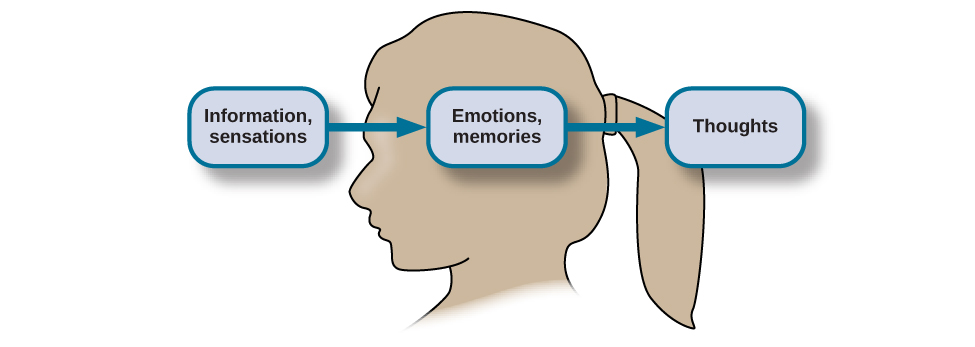
In order to organize this staggering amount of information, the brain has developed a file cabinet of sorts in the mind. The different files stored in the file cabinet are called concepts. Concepts are categories or groupings of linguistic information, images, ideas, or memories, such as life experiences. Concepts are, in many ways, big ideas that are generated by observing details, and categorizing and combining these details into cognitive structures. You use concepts to see the relationships among the different elements of your experiences and to keep the information in your mind organized and accessible.
Concepts are informed by our semantic memory (you will learn more about this concept when you study memory) and are present in every aspect of our lives; however, one of the easiest places to notice concepts is inside a classroom, where they are discussed explicitly. When you study United States history, for example, you learn about more than just individual events that have happened in America’s past. You absorb a large quantity of information by listening to and participating in discussions, examining maps, and reading first-hand accounts of people’s lives. Your brain analyzes these details and develops an overall understanding of American history. In the process, your brain gathers details that inform and refine your understanding of related concepts like democracy, power, and freedom.
Concepts can be complex and abstract, like justice, or more concrete, like types of birds. In psychology, for example, Piaget’s stages of development are abstract concepts. Some concepts, like tolerance, are agreed upon by many people because they have been used in various ways over many years. Other concepts, like the characteristics of your ideal friend or your family’s birthday traditions, are personal and individualized. In this way, concepts touch every aspect of our lives, from our many daily routines to the guiding principles behind the way governments function.
Concepts are at the core of intelligent behavior. We expect people to be able to know what to do in new situations and when confronting new objects. If you go into a new classroom and see chairs, a blackboard, a projector, and a screen, you know what these things are and how they will be used. You’ll sit on one of the chairs and expect the instructor to write on the blackboard or project something onto the screen. You do this even if you have never seen any of these particular objects before, because you have concepts of classrooms, chairs, projectors, and so forth, that tell you what they are and what you’re supposed to do with them. Furthermore, if someone tells you a new fact about the projector—for example, that it has a halogen bulb—you are likely to extend this fact to other projectors you encounter. In short, concepts allow you to extend what you have learned about a limited number of objects to a potentially infinite set of entities.

Another technique used by your brain to organize information is the identification of prototypes for the concepts you have developed. A prototype is the best example or representation of a concept. For example, for the category of civil disobedience, your prototype could be Rosa Parks. Her peaceful resistance to segregation on a city bus in Montgomery, Alabama, is a recognizable example of civil disobedience. Or your prototype could be Mohandas Gandhi, sometimes called Mahatma Gandhi (“Mahatma” is an honorific title) (Figure 10).
Mohandas Gandhi served as a nonviolent force for independence for India while simultaneously demanding that Buddhist, Hindu, Muslim, and Christian leaders—both Indian and British—collaborate peacefully. Although he was not always successful in preventing violence around him, his life provides a steadfast example of the civil disobedience prototype (Constitutional Rights Foundation, 2013). Just as concepts can be abstract or concrete, we can make a distinction between concepts that are functions of our direct experience with the world and those that are more artificial in nature.
Try It
Link to Learning
Natural and Artificial Concepts
In psychology, concepts can be divided into two categories, natural and artificial. Natural concepts are created “naturally” through your experiences and can be developed from either direct or indirect experiences. For example, if you live in Essex Junction, Vermont, you have probably had a lot of direct experience with snow. You’ve watched it fall from the sky, you’ve seen lightly falling snow that barely covers the windshield of your car, and you’ve shoveled out 18 inches of fluffy white snow as you’ve thought, “This is perfect for skiing.” You’ve thrown snowballs at your best friend and gone sledding down the steepest hill in town. In short, you know snow. You know what it looks like, smells like, tastes like, and feels like. If, however, you’ve lived your whole life on the island of Saint Vincent in the Caribbean, you may never have actually seen snow, much less tasted, smelled, or touched it. You know snow from the indirect experience of seeing pictures of falling snow—or from watching films that feature snow as part of the setting. Either way, snow is a natural concept because you can construct an understanding of it through direct observations or experiences of snow (Figure 11).

An artificial concept on the other hand, is a concept that is defined by a specific set of characteristics. Various properties of geometric shapes, like squares and triangles, serve as useful examples of artificial concepts. A triangle always has three angles and three sides. A square always has four equal sides and four right angles. Mathematical formulas, like the equation for area (length × width) are artificial concepts defined by specific sets of characteristics that are always the same. Artificial concepts can enhance the understanding of a topic by building on one another. For example, before learning the concept of “area of a square” (and the formula to find it), you must understand what a square is. Once the concept of “area of a square” is understood, an understanding of area for other geometric shapes can be built upon the original understanding of area. The use of artificial concepts to define an idea is crucial to communicating with others and engaging in complex thought. According to Goldstone and Kersten (2003), concepts act as building blocks and can be connected in countless combinations to create complex thoughts.
Try It
Schemata
A schema is a mental construct consisting of a cluster or collection of related concepts (Bartlett, 1932). There are many different types of schemata, and they all have one thing in common: schemata are a method of organizing information that allows the brain to work more efficiently. When a schema is activated, the brain makes immediate assumptions about the person or object being observed.
There are several types of schemata. A role schema makes assumptions about how individuals in certain roles will behave (Callero, 1994). For example, imagine you meet someone who introduces himself as a firefighter. When this happens, your brain automatically activates the “firefighter schema” and begins making assumptions that this person is brave, selfless, and community-oriented. Despite not knowing this person, already you have unknowingly made judgments about him. Schemata also help you fill in gaps in the information you receive from the world around you. While schemata allow for more efficient information processing, there can be problems with schemata, regardless of whether they are accurate: Perhaps this particular firefighter is not brave, he just works as a firefighter to pay the bills while studying to become a children’s librarian.
An event schema, also known as a cognitive script, is a set of behaviors that can feel like a routine. Think about what you do when you walk into an elevator (Figure 12). First, the doors open and you wait to let exiting passengers leave the elevator car. Then, you step into the elevator and turn around to face the doors, looking for the correct button to push. You never face the back of the elevator, do you? And when you’re riding in a crowded elevator and you can’t face the front, it feels uncomfortable, doesn’t it? Interestingly, event schemata can vary widely among different cultures and countries. For example, while it is quite common for people to greet one another with a handshake in the United States, in Tibet, you greet someone by sticking your tongue out at them, and in Belize, you bump fists (Cairns Regional Council, n.d.)

Because event schemata are automatic, they can be difficult to change. Imagine that you are driving home from work or school. This event schema involves getting in the car, shutting the door, and buckling your seatbelt before putting the key in the ignition. You might perform this script two or three times each day. As you drive home, you hear your phone’s ring tone. Typically, the event schema that occurs when you hear your phone ringing involves locating the phone and answering it or responding to your latest text message. So without thinking, you reach for your phone, which could be in your pocket, in your bag, or on the passenger seat of the car. This powerful event schema is informed by your pattern of behavior and the pleasurable stimulation that a phone call or text message gives your brain. Because it is a schema, it is extremely challenging for us to stop reaching for the phone, even though we know that we endanger our own lives and the lives of others while we do it (Neyfakh, 2013) (Figure 13).

Remember the elevator? It feels almost impossible to walk in and not face the door. Our powerful event schema dictates our behavior in the elevator, and it is no different with our phones. Current research suggests that it is the habit, or event schema, of checking our phones in many different situations that makes refraining from checking them while driving especially difficult (Bayer & Campbell, 2012). Because texting and driving has become a dangerous epidemic in recent years, psychologists are looking at ways to help people interrupt the “phone schema” while driving. Event schemata like these are the reason why many habits are difficult to break once they have been acquired. As we continue to examine thinking, keep in mind how powerful the forces of concepts and schemata are to our understanding of the world.
Try It
Watch It
Watch this CrashCourse video to see more examples of concepts and prototypes. You’ll also get a preview on other key topics in cognition, including problem-solving strategies like algorithms and heuristics.
Think It Over
Try It
People face problems every day—usually, multiple problems throughout the day. Sometimes these problems are straightforward: To double a recipe for pizza dough, for example, all that is required is that each ingredient in the recipe be doubled. Sometimes, however, the problems we encounter are more complex. For example, say you have a work deadline, and you must mail a printed copy of a report to your supervisor by the end of the business day. The report is time-sensitive and must be sent overnight. You finished the report last night, but your printer will not work today. What should you do? First, you need to identify the problem and then apply a strategy for solving the problem.
Problem-Solving Strategies
When you are presented with a problem—whether it is a complex mathematical problem or a broken printer, how do you solve it? Before finding a solution to the problem, the problem must first be clearly identified. After that, one of many problem solving strategies can be applied, hopefully resulting in a solution.
A problem-solving strategy is a plan of action used to find a solution. Different strategies have different action plans associated with them. For example, a well-known strategy is trial and error. The old adage, “If at first you don’t succeed, try, try again” describes trial and error. In terms of your broken printer, you could try checking the ink levels, and if that doesn’t work, you could check to make sure the paper tray isn’t jammed. Or maybe the printer isn’t actually connected to your laptop. When using trial and error, you would continue to try different solutions until you solved your problem. Although trial and error is not typically one of the most time-efficient strategies, it is a commonly used one.
| Method | Description | Example |
|---|---|---|
| Trial and error | Continue trying different solutions until problem is solved | Restarting phone, turning off WiFi, turning off bluetooth in order to determine why your phone is malfunctioning |
| Algorithm | Step-by-step problem-solving formula | Instruction manual for installing new software on your computer |
| Heuristic | General problem-solving framework | Working backwards; breaking a task into steps |
Another type of strategy is an algorithm. An algorithm is a problem-solving formula that provides you with step-by-step instructions used to achieve a desired outcome (Kahneman, 2011). You can think of an algorithm as a recipe with highly detailed instructions that produce the same result every time they are performed. Algorithms are used frequently in our everyday lives, especially in computer science. When you run a search on the Internet, search engines like Google use algorithms to decide which entries will appear first in your list of results. Facebook also uses algorithms to decide which posts to display on your newsfeed. Can you identify other situations in which algorithms are used?
A heuristic is another type of problem solving strategy. While an algorithm must be followed exactly to produce a correct result, a heuristic is a general problem-solving framework (Tversky & Kahneman, 1974). You can think of these as mental shortcuts that are used to solve problems. A “rule of thumb” is an example of a heuristic. Such a rule saves the person time and energy when making a decision, but despite its time-saving characteristics, it is not always the best method for making a rational decision. Different types of heuristics are used in different types of situations, but the impulse to use a heuristic occurs when one of five conditions is met (Pratkanis, 1989):
- When one is faced with too much information
- When the time to make a decision is limited
- When the decision to be made is unimportant
- When there is access to very little information to use in making the decision
- When an appropriate heuristic happens to come to mind in the same moment
Working backwards is a useful heuristic in which you begin solving the problem by focusing on the end result. Consider this example: You live in Washington, D.C. and have been invited to a wedding at 4 PM on Saturday in Philadelphia. Knowing that Interstate 95 tends to back up any day of the week, you need to plan your route and time your departure accordingly. If you want to be at the wedding service by 3:30 PM, and it takes 2.5 hours to get to Philadelphia without traffic, what time should you leave your house? You use the working backwards heuristic to plan the events of your day on a regular basis, probably without even thinking about it.
Watch It
What problem-solving method could you use to solve Einstein’s famous riddle?
Another useful heuristic is the practice of accomplishing a large goal or task by breaking it into a series of smaller steps. Students often use this common method to complete a large research project or long essay for school. For example, students typically brainstorm, develop a thesis or main topic, research the chosen topic, organize their information into an outline, write a rough draft, revise and edit the rough draft, develop a final draft, organize the references list, and proofread their work before turning in the project. The large task becomes less overwhelming when it is broken down into a series of small steps.
Everyday Connections: Solving Puzzles
Problem-solving abilities can improve with practice. Many people challenge themselves every day with puzzles and other mental exercises to sharpen their problem-solving skills. Sudoku puzzles appear daily in most newspapers. Typically, a sudoku puzzle is a 9×9 grid. The simple sudoku below (Figure 14) is a 4×4 grid. To solve the puzzle, fill in the empty boxes with a single digit: 1, 2, 3, or 4. Here are the rules: The numbers must total 10 in each bolded box, each row, and each column; however, each digit can only appear once in a bolded box, row, and column. Time yourself as you solve this puzzle and compare your time with a classmate.
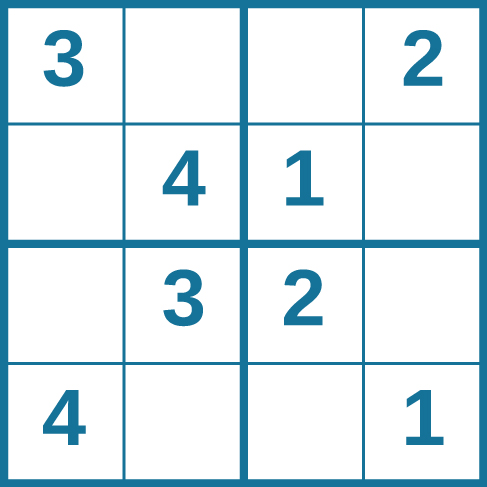
Here is another popular type of puzzle that challenges your spatial reasoning skills. Connect all nine dots with four connecting straight lines without lifting your pencil from the paper:
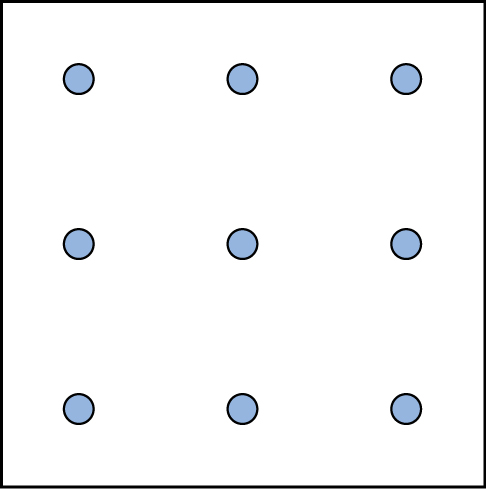
Take a look at the “Puzzling Scales” logic puzzle below (Figure 16). Sam Loyd, a well-known puzzle master, created and refined countless puzzles throughout his lifetime (Cyclopedia of Puzzles, n.d.).
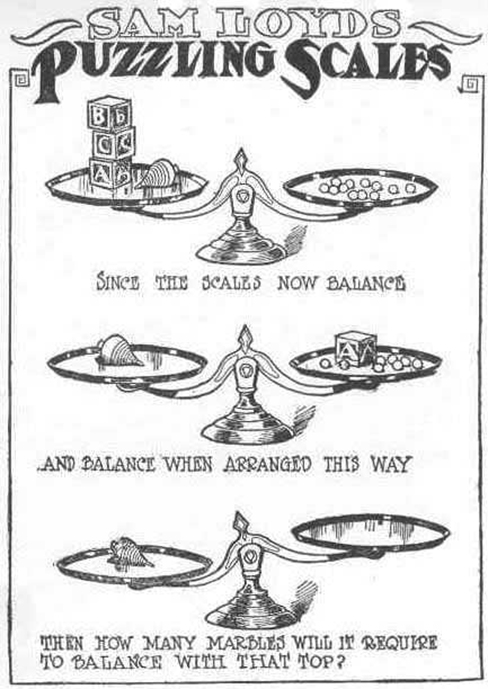
Check your answers here.
Were you able to determine how many marbles are needed to balance the scales in the Puzzling Scales? You need nine. Were you able to solve the other problems above? Here are the answers:
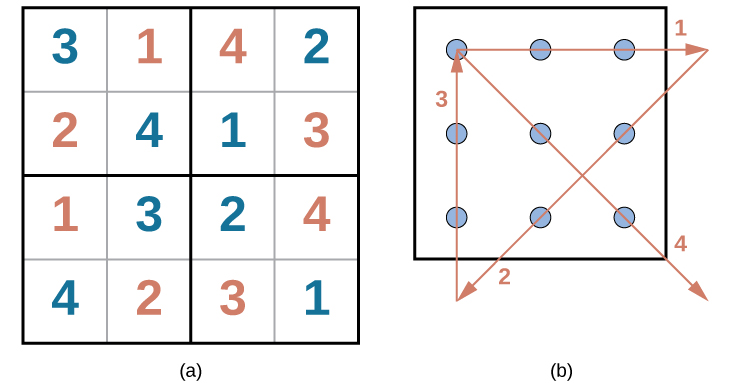
Try It
Pitfalls to Problem Solving
Not all problems are successfully solved, however. What challenges stop us from successfully solving a problem? Albert Einstein once said, “Insanity is doing the same thing over and over again and expecting a different result.” Imagine a person in a room that has four doorways. One doorway that has always been open in the past is now locked. The person, accustomed to exiting the room by that particular doorway, keeps trying to get out through the same doorway even though the other three doorways are open. The person is stuck—but she just needs to go to another doorway, instead of trying to get out through the locked doorway. A mental set is where you persist in approaching a problem in a way that has worked in the past but is clearly not working now. Functional fixedness is a type of mental set where you cannot perceive an object being used for something other than what it was designed for. During the Apollo 13 mission to the moon, NASA engineers at Mission Control had to overcome functional fixedness to save the lives of the astronauts aboard the spacecraft. An explosion in a module of the spacecraft damaged multiple systems. The astronauts were in danger of being poisoned by rising levels of carbon dioxide because of problems with the carbon dioxide filters. The engineers found a way for the astronauts to use spare plastic bags, tape, and air hoses to create a makeshift air filter, which saved the lives of the astronauts.
Link to Learning
Try It
In order to make good decisions, we use our knowledge and our reasoning. Often, this knowledge and reasoning is sound and solid. Sometimes, however, we are swayed by biases or by others manipulating a situation. For example, let’s say you and three friends wanted to rent a house and had a combined target budget of $1,600. The realtor shows you only very run-down houses for $1,600 and then shows you a very nice house for $2,000. Might you ask each person to pay more in rent to get the $2,000 home? Why would the realtor show you the run-down houses and the nice house? The realtor may be challenging your anchoring bias. An anchoring bias occurs when you focus on one piece of information when making a decision or solving a problem. In this case, you’re so focused on the amount of money you are willing to spend that you may not recognize what kinds of houses are available at that price point.
The confirmation bias is the tendency to focus on information that confirms your existing beliefs. For example, if you think that your professor is not very nice, you notice all of the instances of rude behavior exhibited by the professor while ignoring the countless pleasant interactions he is involved in on a daily basis. This bias proves that first impressions do matter and that we tend to look for information to confirm our initial judgments of others.
Watch It
Watch this video from the Big Think to learn more about the confirmation bias.
You can view the transcript for “Confirmation Bias: Your Brain is So Judgmental” here (opens in new window).
Hindsight bias leads you to believe that the event you just experienced was predictable, even though it really wasn’t. In other words, you knew all along that things would turn out the way they did. Representative bias describes a faulty way of thinking, in which you unintentionally stereotype someone or something; for example, you may assume that your professors spend their free time reading books and engaging in intellectual conversation, because the idea of them spending their time playing volleyball or visiting an amusement park does not fit in with your stereotypes of professors.
Finally, the availability heuristic is a heuristic in which you make a decision based on an example, information, or recent experience that is that readily available to you, even though it may not be the best example to inform your decision. To use a common example, would you guess there are more murders or more suicides in America each year? When asked, most people would guess there are more murders. In truth, there are twice as many suicides as there are murders each year. However, murders seem more common because we hear a lot more about murders on an average day. Unless someone we know or someone famous takes their own life, it does not make the news. Murders, on the other hand, we see in the news every day. This leads to the erroneous assumption that the easier it is to think of instances of something, the more often that thing occurs.
Watch It
Watch the following video for an example of the availability heuristic.
Biases tend to “preserve that which is already established—to maintain our preexisting knowledge, beliefs, attitudes, and hypotheses” (Aronson, 1995; Kahneman, 2011). These biases are summarized in Table 2 below.
| Bias | Description |
|---|---|
| Anchoring | Tendency to focus on one particular piece of information when making decisions or problem-solving |
| Confirmation | Focuses on information that confirms existing beliefs |
| Hindsight | Belief that the event just experienced was predictable |
| Representative | Unintentional stereotyping of someone or something |
| Availability | Decision is based upon either an available precedent or an example that may be faulty |
Link to Learning
Learn more about heuristics and common biases through the article, “8 Common Thinking Mistakes Our Brains Make Every Day and How to Prevent Them” by Belle Beth Cooper.
You can also watch this clever music video explaining these and other cognitive biases.
Try It
Think It Over
Which type of bias do you recognize in your own decision making processes? How has this bias affected how you’ve made decisions in the past and how can you use your awareness of it to improve your decisions making skills in the future?
Try It
Language
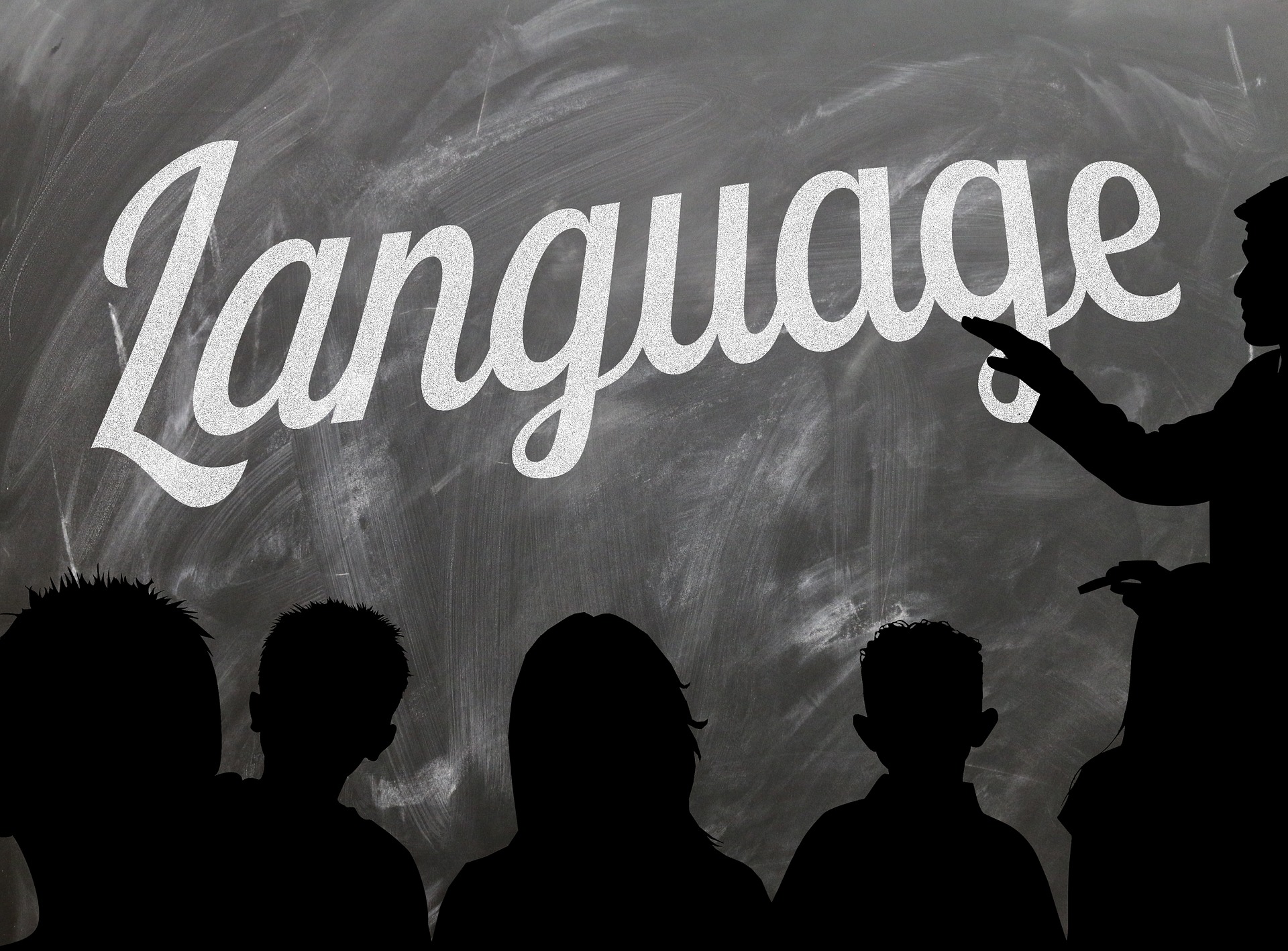 Language is a communication system that involves using words and systematic rules to organize those words to transmit information from one individual to another. While language is a form of communication, not all communication is language. Many species communicate with one another through their postures, movements, odors, or vocalizations. This communication is crucial for species that need to interact and develop social relationships with their conspecifics. However, many people have asserted that it is language that makes humans unique among all of the animal species (Corballis & Suddendorf, 2007; Tomasello & Rakoczy, 2003). This section will focus on what distinguishes language as a special form of communication, how the use of language develops, and how language affects the way we think.
Language is a communication system that involves using words and systematic rules to organize those words to transmit information from one individual to another. While language is a form of communication, not all communication is language. Many species communicate with one another through their postures, movements, odors, or vocalizations. This communication is crucial for species that need to interact and develop social relationships with their conspecifics. However, many people have asserted that it is language that makes humans unique among all of the animal species (Corballis & Suddendorf, 2007; Tomasello & Rakoczy, 2003). This section will focus on what distinguishes language as a special form of communication, how the use of language develops, and how language affects the way we think.
Language
Learning Objectives
- Understand how the use of language develops
- Explain the relationship between language and thinking
Language Development
Language is a communication system that involves using words and systematic rules to organize those words to transmit information from one individual to another. While language is a form of communication, not all communication is language. Many species communicate with one another through their postures, movements, odors, or vocalizations. This communication is crucial for species that need to interact and develop social relationships with their conspecifics. However, many people have asserted that it is language that makes humans unique among all of the animal species (Corballis & Suddendorf, 2007; Tomasello & Rakoczy, 2003). This section will focus on what distinguishes language as a special form of communication, how the use of language develops, and how language affects the way we think.
Components of Language
Language, be it spoken, signed, or written, has specific components: a lexicon and grammar. Lexicon refers to the words of a given language. Thus, lexicon is a language’s vocabulary. Grammar refers to the set of rules that are used to convey meaning through the use of the lexicon (Fernández & Cairns, 2011). For instance, English grammar dictates that most verbs receive an “-ed” at the end to indicate past tense.
Try It
Words are formed by combining the various phonemes that make up the language. A phoneme (e.g., the sounds “ah” vs. “eh”) is a basic sound unit of a given language, and different languages have different sets of phonemes. Phonemes are combined to form morphemes, which are the smallest units of language that convey some type of meaning (e.g., “I” is both a phoneme and a morpheme). Further, a morpheme is not the same as a word. The main difference is that a morpheme sometimes does not stand alone, but a word, by definition, always stands alone.
Try It
We use semantics and syntax to construct language. Semantics and syntax are part of a language’s grammar. Semantics refers to the process by which we derive meaning from morphemes and words. Syntax refers to the way words are organized into sentences (Chomsky, 1965; Fernández & Cairns, 2011).
We apply the rules of grammar to organize the lexicon in novel and creative ways, which allow us to communicate information about both concrete and abstract concepts. We can talk about our immediate and observable surroundings as well as the surface of unseen planets. We can share our innermost thoughts, our plans for the future, and debate the value of a college education. We can provide detailed instructions for cooking a meal, fixing a car, or building a fire. The flexibility that language provides to relay vastly different types of information is a property that makes language so distinct as a mode of communication among humans.
Language Development
Given the remarkable complexity of a language, one might expect that mastering a language would be an especially arduous task; indeed, for those of us trying to learn a second language as adults, this might seem to be true. However, young children master language very quickly with relative ease. B. F. Skinner (1957) proposed that language is learned through reinforcement. Noam Chomsky (1965) criticized this behaviorist approach, asserting instead that the mechanisms underlying language acquisition are biologically determined. The use of language develops in the absence of formal instruction and appears to follow a very similar pattern in children from vastly different cultures and backgrounds. It would seem, therefore, that we are born with a biological predisposition to acquire a language (Chomsky, 1965; Fernández & Cairns, 2011). Moreover, it appears that there is a critical period for language acquisition, such that this proficiency at acquiring language is maximal early in life; generally, as people age, the ease with which they acquire and master new languages diminishes (Johnson & Newport, 1989; Lenneberg, 1967; Singleton, 1995).
Children begin to learn about language from a very early age (Table 1). In fact, it appears that this is occurring even before we are born. Newborns show preference for their mother’s voice and appear to be able to discriminate between the language spoken by their mother and other languages. Babies are also attuned to the languages being used around them and show preferences for videos of faces that are moving in synchrony with the audio of spoken language versus videos that do not synchronize with the audio (Blossom & Morgan, 2006; Pickens, 1994; Spelke & Cortelyou, 1981).
| Stage | Age | Developmental Language and Communication |
|---|---|---|
| 1 | 0–3 months | Reflexive communication |
| 2 | 3–8 months | Reflexive communication; interest in others |
| 3 | 8–13 months | Intentional communication; sociability |
| 4 | 12–18 months | First words |
| 5 | 18–24 months | Simple sentences of two words |
| 6 | 2–3 years | Sentences of three or more words |
| 7 | 3–5 years | Complex sentences; has conversations |
Dig Deeper: The Case of Genie
In the fall of 1970, a social worker in the Los Angeles area found a 13-year-old girl who was being raised in extremely neglectful and abusive conditions. The girl, who came to be known as Genie, had lived most of her life tied to a potty chair or confined to a crib in a small room that was kept closed with the curtains drawn. For a little over a decade, Genie had virtually no social interaction and no access to the outside world. As a result of these conditions, Genie was unable to stand up, chew solid food, or speak (Fromkin, Krashen, Curtiss, Rigler, & Rigler, 1974; Rymer, 1993). The police took Genie into protective custody.
Genie’s abilities improved dramatically following her removal from her abusive environment, and early on, it appeared she was acquiring language—much later than would be predicted by critical period hypotheses that had been posited at the time (Fromkin et al., 1974). Genie managed to amass an impressive vocabulary in a relatively short amount of time. However, she never developed a mastery of the grammatical aspects of language (Curtiss, 1981). Perhaps being deprived of the opportunity to learn language during a critical period impeded Genie’s ability to fully acquire and use language.
You may recall that each language has its own set of phonemes that are used to generate morphemes, words, and so on. Babies can discriminate among the sounds that make up a language (for example, they can tell the difference between the “s” in vision and the “ss” in fission); early on, they can differentiate between the sounds of all human languages, even those that do not occur in the languages that are used in their environments. However, by the time that they are about 1 year old, they can only discriminate among those phonemes that are used in the language or languages in their environments (Jensen, 2011; Werker & Lalonde, 1988; Werker & Tees, 1984).
Link to Learning
After the first few months of life, babies enter what is known as the babbling stage, during which time they tend to produce single syllables that are repeated over and over. As time passes, more variations appear in the syllables that they produce. During this time, it is unlikely that the babies are trying to communicate; they are just as likely to babble when they are alone as when they are with their caregivers (Fernández & Cairns, 2011). Interestingly, babies who are raised in environments in which sign language is used will also begin to show babbling in the gestures of their hands during this stage (Petitto, Holowka, Sergio, Levy, & Ostry, 2004).
Generally, a child’s first word is uttered sometime between the ages of 1 year to 18 months, and for the next few months, the child will remain in the “one word” stage of language development. During this time, children know a number of words, but they only produce one-word utterances. The child’s early vocabulary is limited to familiar objects or events, often nouns. Although children in this stage only make one-word utterances, these words often carry larger meaning (Fernández & Cairns, 2011). So, for example, a child saying “cookie” could be identifying a cookie or asking for a cookie.
As a child’s lexicon grows, she begins to utter simple sentences and to acquire new vocabulary at a very rapid pace. In addition, children begin to demonstrate a clear understanding of the specific rules that apply to their language(s). Even the mistakes that children sometimes make provide evidence of just how much they understand about those rules. This is sometimes seen in the form of overgeneralization. In this context, overgeneralization refers to an extension of a language rule to an exception to the rule. For example, in English, it is usually the case that an “s” is added to the end of a word to indicate plurality. For example, we speak of one dog versus two dogs. Young children will overgeneralize this rule to cases that are exceptions to the “add an s to the end of the word” rule and say things like “those two gooses” or “three mouses.” Clearly, the rules of the language are understood, even if the exceptions to the rules are still being learned (Moskowitz, 1978).
Try It
Language and Thinking
Think About It: The Meaning of Language
Think about what you know of other languages; perhaps you even speak multiple languages. Imagine for a moment that your closest friend fluently speaks more than one language. Do you think that friend thinks differently, depending on which language is being spoken? You may know a few words that are not translatable from their original language into English. For example, the Portuguese word saudade originated during the 15th century, when Portuguese sailors left home to explore the seas and travel to Africa or Asia. Those left behind described the emptiness and fondness they felt as saudade (Figure 20). The word came to express many meanings, including loss, nostalgia, yearning, warm memories, and hope. There is no single word in English that includes all of those emotions in a single description. Do words such as saudade indicate that different languages produce different patterns of thought in people? What do you think??
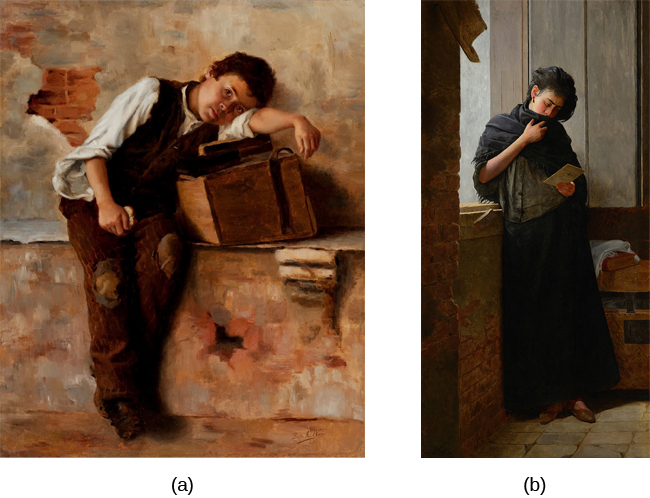
Language may indeed influence the way that we think, an idea known as linguistic determinism. One recent demonstration of this phenomenon involved differences in the way that English and Mandarin Chinese speakers talk and think about time. English speakers tend to talk about time using terms that describe changes along a horizontal dimension, for example, saying something like “I’m running behind schedule” or “Don’t get ahead of yourself.” While Mandarin Chinese speakers also describe time in horizontal terms, it is not uncommon to also use terms associated with a vertical arrangement. For example, the past might be described as being “up” and the future as being “down.” It turns out that these differences in language translate into differences in performance on cognitive tests designed to measure how quickly an individual can recognize temporal relationships. Specifically, when given a series of tasks with vertical priming, Mandarin Chinese speakers were faster at recognizing temporal relationships between months. Indeed, Boroditsky (2001) sees these results as suggesting that “habits in language encourage habits in thought” (p. 12).
Language does not completely determine our thoughts—our thoughts are far too flexible for that—but habitual uses of language can influence our habit of thought and action. For instance, some linguistic practice seems to be associated even with cultural values and social institution. Pronoun drop is the case in point. Pronouns such as “I” and “you” are used to represent the speaker and listener of a speech in English. In an English sentence, these pronouns cannot be dropped if they are used as the subject of a sentence. So, for instance, “I went to the movie last night” is fine, but “Went to the movie last night” is not in standard English. However, in other languages such as Japanese, pronouns can be, and in fact often are, dropped from sentences. It turned out that people living in those countries where pronoun drop languages are spoken tend to have more collectivistic values (e.g., employees having greater loyalty toward their employers) than those who use non–pronoun drop languages such as English (Kashima & Kashima, 1998). It was argued that the explicit reference to “you” and “I” may remind speakers the distinction between the self and other, and the differentiation between individuals. Such a linguistic practice may act as a constant reminder of the cultural value, which, in turn, may encourage people to perform the linguistic practice.
One group of researchers who wanted to investigate how language influences thought compared how English speakers and the Dani people of Papua New Guinea think and speak about color. The Dani have two words for color: one word for light and one word for dark. In contrast, the English language has 11 color words. Researchers hypothesized that the number of color terms could limit the ways that the Dani people conceptualized color. However, the Dani were able to distinguish colors with the same ability as English speakers, despite having fewer words at their disposal (Berlin & Kay, 1969). A recent review of research aimed at determining how language might affect something like color perception suggests that language can influence perceptual phenomena, especially in the left hemisphere of the brain. You may recall from earlier chapters that the left hemisphere is associated with language for most people. However, the right (less linguistic hemisphere) of the brain is less affected by linguistic influences on perception (Regier & Kay, 2009)
Watch It
Learn more about language, language acquisition, and especially the connection between language and thought in the following CrashCourse video:
You can view the transcript for “Language: Crash Course Psychology #16” here (opens in new window).
Try It
Learning Objectives
In this chapter, you learned to
- describe attention
- describe cognition and problem-solving strategies
- describe language acquisition and the role language plays in communication and thought
You learned about non-memory cognitive processes in this chapter. Because each of you reading this is using language in some shape or form, we will end with a quick summary and a video on this topic. Language is a communication system that has both a lexicon and a system of grammar. Language acquisition occurs naturally and effortlessly during the early stages of life, and this acquisition occurs in a predictable sequence for individuals around the world. Language has a strong influence on thought, and the concept of how language may influence cognition remains an area of study and debate in psychology.
Watch It
In this TED talk, Lera Boroditsky summarizes unique ways that language and culture intersect with some basic cognitive processes. How was your language shaped your thinking?
Chapter References (Click to expand)
Abler, W. (2013). Sapir, Harris, and Chomsky in the twentieth century. Cognitive Critique, 7, 29–48.
Aronson, E. (Ed.). (1995). Social cognition. In The social animal (p. 151). New York: W.H. Freeman and Company.
Bartlett, F. C. (1932). Remembering: A study in experimental and social psychology. Cambridge, England: Cambridge University Press.
Bayer, J. B., & Campbell, S. W. (2012). Texting while driving on automatic: Considering the frequency-independent side of habit. Computers in Human Behavior, 28, 2083–2090.
Beilock, S. L., & Carr, T. H. (2001). On the fragility of skilled performance: What governs choking under pressure? Journal of Experimental Psychology: General, 130, 701–725.
Berlin, B., & Kay, P. (1969). Basic color terms: Their universality and evolution. Berkley: University of California Press.
Blossom, M., & Morgan, J. L. (2006). Does the face say what the mouth says? A study of infants’ sensitivity to visual prosody. In the 30th annual Boston University Conference on Language Development, Somerville, MA.
Boroditsky, L. (2001). Does language shape thought? Mandarin and English speakers’ conceptions of time. Cognitive Psychology, 43, 1–22.
Boroditsky, L. (2011, February). How language shapes thought. Scientific American, 63–65.Chomsky, N. (1965). Aspects of the theory of syntax. Cambridge, MA: MIT Press
Broadbent, D. A. (1958). Perception and communication. London, England: Pergamon Press.
Cairns Regional Council. (n.d.). Cultural greetings. Retrieved from http://www.cairns.qld.gov.au/__data/assets/pdf_file/0007/8953/CulturalGreetingExercise.pdf
Callero, P. L. (1994). From role-playing to role-using: Understanding role as resource. Social Psychology Quarterly, 57, 228–243.
Cherry, E. C. (1953). Experiments on the recognition of speech with one and two ears. Journal of the Acoustical Society of America, 25, 975–979.
Chomsky, N.(1965). Aspects of the theory of syntax. Cambridge, MA: MIT Press
Corballis, M. C., & Suddendorf, T. (2007). Memory, time, and language. In C. Pasternak (Ed.), What makes us human (pp. 17–36). Oxford, UK: Oneworld Publications.
Curtiss, S. (1981). Dissociations between language and cognition: Cases and implications. Journal of Autism and Developmental Disorders, 11(1), 15–30.
Cyclopedia of Puzzles. (n.d.) Retrieved from http://www.mathpuzzle.com/loyd/
Deutsch, J. A., & Deutsch, D. (1963). Attention: some theoretical considerations. Psychological Review, 70, 80–90.
Fernández, E. M., & Cairns, H. S. (2011). Fundamentals of psycholinguistics. West Sussex, UK: Wiley-Blackwell.
Fromkin, V., Krashen, S., Curtiss, S., Rigler, D., & Rigler, M. (1974). The development of language in Genie: A case of language acquisition beyond the critical period. Brain and Language, 1, 81–107.
German, T. P., & Barrett, H. C. (2005). Functional fixedness in a technologically sparse culture. Psychological Science, 16, 1–5.
Goldstone, R. L., & Kersten, A. (2003). Concepts and categorization. In A. F. Healy, R. W. Proctor, & I.B. Weiner (Eds.), Handbook of psychology (Volume IV, pp. 599–622). Hoboken, New Jersey: John Wiley & Sons, Inc.
Hirst, W. C., Neisser, U., & Spelke, E. S. (1978). Divided attention. Human Nature, 1, 54–61.
James, W. (1983). The principles of psychology. Cambridge, MA: Harvard University Press. (Original work published 1890)
Jensen, J. (2011). Phoneme acquisition: Infants and second language learners. The Language Teacher, 35(6), 24–28.
Johnson, J. S., & Newport, E. L. (1989). Critical period effects in second language learning: The influence of maturational state on the acquisition of English as a second language. Cognitive Psychology, 21, 60–99.
Johnston, W. A., & Heinz, S. P. (1978). Flexibility and capacity demands of attention. Journal of Experimental Psychology: General, 107, 420–435.
Kahneman, D. (2011). Thinking, fast and slow. New York: Farrar, Straus, and Giroux.
Lenneberg, E. (1967). Biological foundations of language. New York: Wiley.
Monsell, S. (2003). Task switching. Trends in Cognitive Science, 7(3), 134–140.
Moray, N. (1959). Attention in dichotic listening: Affective cues and the influence of instructions. Quarterly Journal of Experimental Psychology, 11, 56–60.
Moskowitz, B. A. (1978). The acquisition of language. Scientific American, 239, 92–108. Petitto, L. A., Holowka, S., Sergio, L. E., Levy, B., & Ostry, D. J. (2004). Baby hands that move to the rhythm of language: Hearing babies acquiring sign languages babble silently on the hands. Cognition, 93, 43–73.
Neyfakh, L. (2013, October 7). “Why you can’t stop checking your phone.” Retrieved from http://www.bostonglobe.com/ideas/2013/10/06/why-you-can-stop-checking-your-phone/rrBJzyBGDAr1YlEH5JQDcM/story.html
Petitto, L. A., Holowka, S., Sergio, L. E., Levy, B., & Ostry, D. J. (2004). Baby hands that move to the rhythm of language: Hearing babies acquiring sign languages babble silently on the hands. Cognition, 93, 43–73.
Pickens, J. (1994). Full-term and preterm infants’ perception of face-voice synchrony. Infant Behavior and Development, 17, 447–455.
Pratkanis, A. (1989). The cognitive representation of attitudes. In A. R. Pratkanis, S. J. Breckler, & A. G. Greenwald (Eds.), Attitude structure and function (pp. 71–98). Hillsdale, NJ: Erlbaum.
Regier, T., & Kay, P. (2009). Language, thought, and color: Whorf was half right. Trends in Cognitive Sciences, 13(10), 439–446.
Rymer, R. (1993). Genie: A Scientific Tragedy. New York: Harper Collins.
Sapir, E. (1964). Culture, language, and personality. Berkley: University of California Press. (Original work published 1941)
Simons, D. J., & Chabris, C. F. (1999). Gorillas in our midst: Sustained inattentional blindness for dynamic events. Perception, 28, 1059–1074.
Skinner, B. F. (1957). Verbal behavior. Acton, MA: Copley Publishing Group.
Spelke, E. S., & Cortelyou, A. (1981). Perceptual aspects of social knowing: Looking and listening in infancy. In M.E. Lamb & L.R. Sherrod (Eds.), Infant social cognition: Empirical and theoretical considerations (pp. 61–83). Hillsdale, NJ: Erlbaum.
Spelke, E. S., Hirst, W. C., & Neisser, U. (1976). Skills of divided attention. Cognition, 4, 215–250.
Strayer, D. L., & Drews, F. A. (2007). Cell-phone induced inattention blindness. Current Directions in Psychological Science, 16, 128–131.
Strayer, D. L., & Johnston, W. A. (2001). Driven to distraction: Dual-task studies of simulated driving and conversing on a cellular telephone. Psychological Science, 12, 462–466.
Strayer, D. L., Watson, J. M., & Drews, F. A. (2011) Cognitive distraction while multitasking in the automobile. In Brian Ross (Ed.), The Psychology of Learning and Motivation (Vol. 54, pp. 29–58). Burlington, VT: Academic Press.
Tomasello, M., & Rakoczy, H. (2003). What makes human cognition unique? From individual to shared to collective intentionality. Mind & Language, 18(2), 121–147.
Treisman, A. (1960). Contextual cues in selective listening. Quarterly Journal of Experimental Psychology, 12, 242–248.
Tversky, A., & Kahneman, D. (1974). Judgment under uncertainty: Heuristics and biases. Science, 185(4157), 1124–1131.
van Troyer, G. (1994). Linguistic determinism and mutability: The Sapir-Whorf “hypothesis” and intercultural communication. JALT Journal, 2, 163–178.
Watson, J. M., & Strayer, D. L. (2010). Supertaskers: Profiles in extraordinary multitasking ability. Psychonomic Bulletin & Review, 17, 479–485.
Werker, J. F., & Lalonde, C. E. (1988). Cross-language speech perception: Initial capabilities and developmental change. Developmental Psychology, 24, 672–683.
Werker, J. F., & Tees, R. C. (1984). Cross-language speech perception: Evidence for perceptual reorganization during the first year of life. Infant Behavior and Development, 7, 49–63.
Whorf, B. L. (1956). Language, thought and relativity. Cambridge, MA: MIT Press.
Licenses and Attributions (Click to expand)
CC original content.
Attention, Thinking and Language. Authored by: Karenna Malavanti Provided by: PressBooks. License: CC BY-SA: Attribution-ShareAlike
CC licensed content, Shared previously
- Why It Matters: Thinking and Intelligence. Authored by: Lumen Learning License: CC BY: Attribution Located at: https://pressbooks.online.ucf.edu/lumenpsychology/chapter/introduction-10/
- Attention. Authored by: Frances Friedrich. Located at NOBA Psychology. License: CC-BY-NC-SA. Retrieved from: Retrieved from http://noba.to/uv9x8df5
- Introduction to Thinking and Intelligence. Authored by: OpenStax College. License: CC BY: Attribution. License Terms: Download for free at https://openstax.org/books/psychology-2e/pages/1-introduction Located at: https://openstax.org/books/psychology-2e/pages/7-introduction.
- What Is Cognition?. Authored by: OpenStax College. License: CC BY: Attribution. License Terms: Download for free at https://openstax.org/books/psychology-2e/pages/1-introduction Located at: https://openstax.org/books/psychology-2e/pages/7-1-what-is-cognition.
- A Thinking Man Image. Authored by: Wesley Nitsckie. License: CC BY-SA: Attribution-ShareAlike Located at: https://www.flickr.com/photos/nitsckie/5507777269.
- What Is Cognition?. Authored by: Lumen Learning License: CC BY: Attribution Located at: https://pressbooks.online.ucf.edu/lumenpsychology/chapter/what-is-cognition/
- Categories and Concepts. Authored by: Gregory Murphy. Provided by: New York University. Project: The Noba Project. License: CC BY-NC-SA: Attribution-NonCommercial-ShareAlike Located at: http://nobaproject.com/textbooks/wendy-king-introduction-to-psychology-the-full-noba-collection/modules/categories-and-concepts.
- Solving Problems. Authored by: Lumen Learning License: CC BY: Attribution Located at: https://pressbooks.online.ucf.edu/lumenpsychology/chapter/problem-solving/
- Problem-Solving. Authored by: OpenStax College. License: CC BY: Attribution. License Terms: Download for free at https://openstax.org/books/psychology-2e/pages/1-introduction. Located at: https://openstax.org/books/psychology-2e/pages/7-3-problem-solving.
- Pitfalls to Problem Solving. Authored by: Lumen Learning License: CC BY: Attribution Located at: https://pressbooks.online.ucf.edu/lumenpsychology/chapter/reading-pitfalls-to-problem/
- Introduction to Language. Authored by: Lumen Learning License: CC BY: Attribution Located at: https://pressbooks.online.ucf.edu/lumenpsychology/chapter/outcome-language/
- Language. Authored by: OpenStax College. License: CC BY: Attribution. License Terms: Download for free at https://openstax.org/books/psychology-2e/pages/1-introduction Located at: https://openstax.org/books/psychology-2e/pages/7-2-language.
- Language. Authored by: geralt. Provided by: Pixabay. License: CC0: No Rights Reserved Located at: https://pixabay.com/en/school-board-languages-blackboard-1063556/.
- Language and Language Use. Authored by: Lumen Learning License: CC BY: Attribution Located at: https://pressbooks.online.ucf.edu/lumenpsychology/chapter/language-and-language-use/
- Language and Language Use. Authored by: Yoshihisa Kashima. Project: The Noba Project. License: CC BY-NC-SA: Attribution-NonCommercial-ShareAlike Located at: http://nobaproject.com/textbooks/introduction-to-psychology-the-full-noba-collection/modules/language-and-language-use.
- Language Development. Authored by: Lumen Learning License: CC BY: Attribution Located at: https://pressbooks.online.ucf.edu/lumenpsychology/chapter/language/
- Morpheme. Provided by: Wikipedia. License: CC BY-SA: Attribution-ShareAlike Located at: https://en.wikipedia.org/wiki/Morpheme.
- Language and Thinking. Authored by: Lumen Learning License: CC BY: Attribution Located at: https://pressbooks.online.ucf.edu/lumenpsychology/chapter/reading-language-and-thought/
- Summary. Authored by: OpenStax College. License: CC BY: Attribution. License Terms: Download for free at https://openstax.org/books/psychology-2e/pages/1-introduction. Located at: https://openstax.org/books/psychology-2e/pages/7-summary.
All rights reserved content
- Cognition: How Your Mind Can Amaze and Betray You – Crash Course Psychology #15. Provided by: CrashCourse. License: All Rights Reserved. License Terms: Standard YouTube License Located at: https://www.youtube.com/watch?v=R-sVnmmw6WY&feature=youtu.be&list=PL8dPuuaLjXtOPRKzVLY0jJY-uHOH9KVU6.
- Can you solve Einsteinu2019s Riddle? . Authored by: Dan Van der Vieren. Provided by: Ted-Ed. License: Other. License Terms: Standard YouTube License. Located at: https://www.youtube.com/watch?v=1rDVz_Fb6HQ&index=3&list=PLUmyCeox8XCwB8FrEfDQtQZmCc2qYMS5a.
- Language: Crash Course Psychology #16. Authored by: CrashCourse. License: Other. License Terms: Standard YouTube License. Located at: https://www.youtube.com/watch?v=s9shPouRWCs&feature=youtu.be&list=PL8dPuuaLjXtOPRKzVLY0jJY-uHOH9KVU6.
- How language shapes the way we think Authored by: Lera Boroditsky. Provided by: TED. License: Other. License Terms: Standard YouTube License. Located at: https://youtu.be/RKK7wGAYP6k
